Cost-Effectiveness with DALY
In the DALY (Disability Adjusted Life Years) philosophy, every person is born with a certain number of life years potentially lived in optimal health. People may lose these healthy life years through living with illness and/or through dying before a reference life expectancy. These losses in healthy life years are exactly what is measured by the DALY metric. Ten DALYs, for instance, correspond to ten lost years of a healthy life, attributable to morbidity, mortality, or both.
Theory and Reference:
Calculating disability-adjusted life years to quantify the burden of disease
DALYs are composed of years lived with disability (YLDs) and years of life lost due to premature mortality (YLLs).
In the most generic form, the formula for DALY = YLL + YLD
YLDs, the morbidity component of the DALYs, are calculated as follows
YLD = Number of cases x duration till emission or death x disability weight
YLLs, the mortality component of the DALYs, are calculated as follows:
YLL = Number of deaths x life expectancy at the age of death.
Combining both social weighting functions gives the following extended YLD and YLL formulae:


Where N equals the number of cases, M is the number of deaths, and DW is the disability weight. K is a modulating factor equalling 1 if age weighting is applied and 0 otherwise; A and L represent, respectively, the age at onset and the duration, or the age at the death and the life expectancy at the age of death. With x the concerning age, and C and β constants are commonly set to 0.1658 and 0.04.
DALY calculation in the SpiceLogic Decision Tree software
In the SpiceLogic Decision Tree software Cost-Effectiveness criteria editor, you will find an option to use DALY as effectiveness payoff in the Decision Tree.
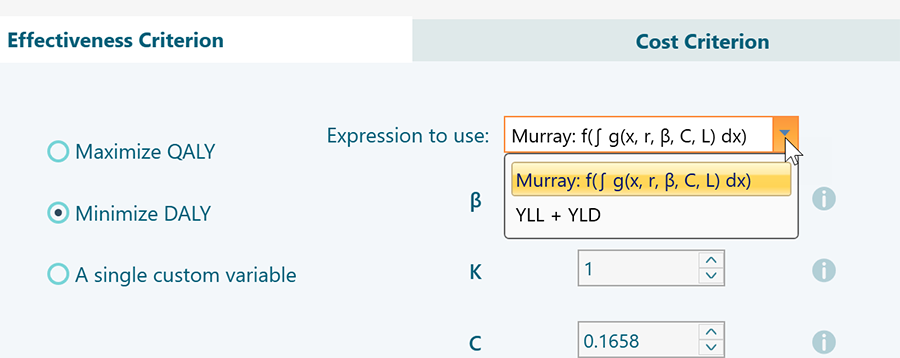
If you select the first option which is shown as Murray: the software will use the integral formula as shown in the early section of this page. If you choose the Muray formula, then, you can set a parameter value for β, K, and C from this panel. And then, in the Decision Tree Payoff editor, you will find the User interface as shown below.
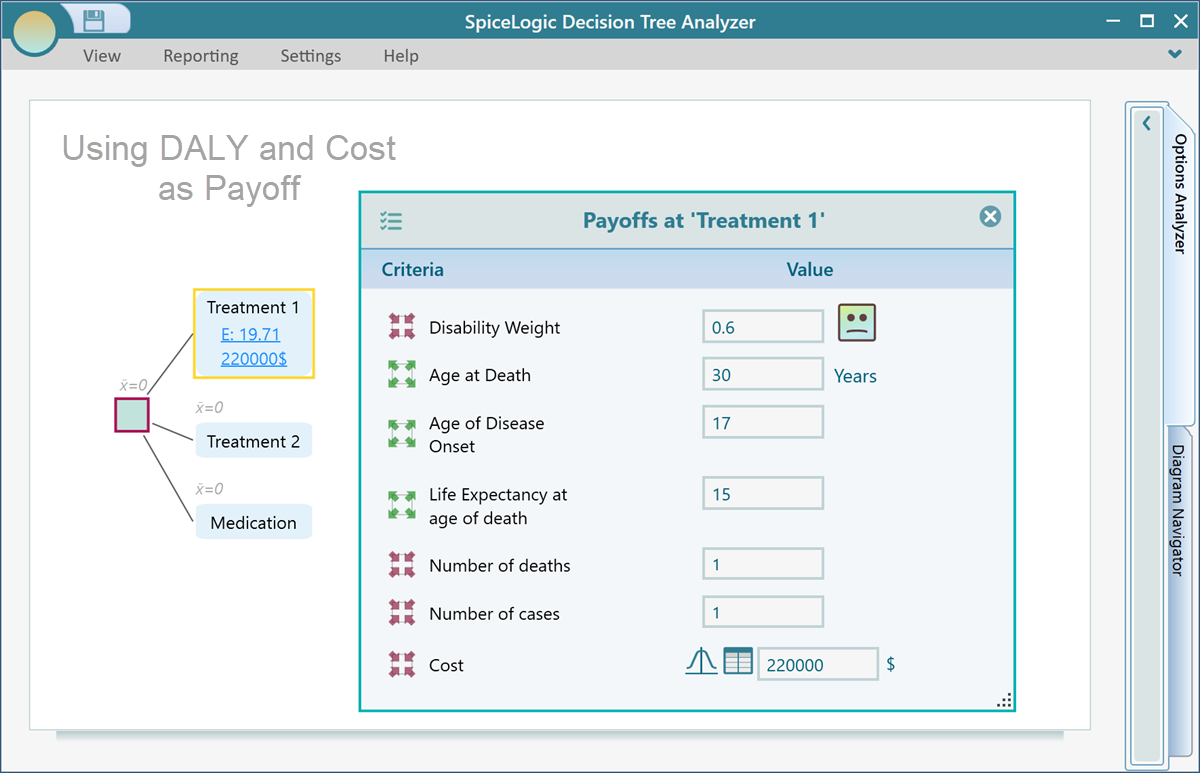
But, you can choose a simpler option. You may want that, in the Decision Tree, you will enter the value of YLL and YLD directly. Then, choose the second option from the DALY setup panel as shown below.
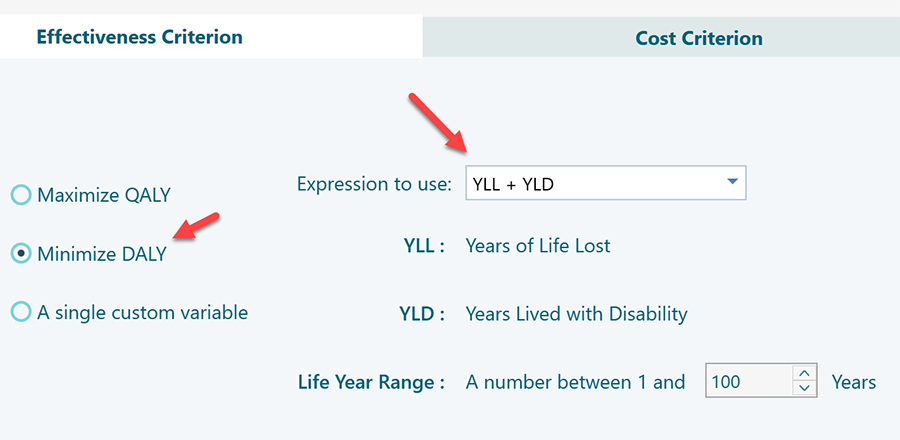
Once you choose this option, the Decision Tree payoff editor will present the User Interface as shown below.
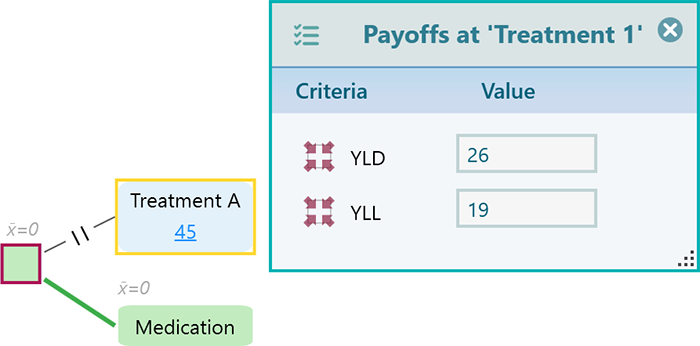
Worked out example
Imagine a woman becomes sick with bipolar depression at age 35, that she has had it for 10 years, and dies as a result.
⇒ How many DALYs have been lost as a result?
⇒ How many DALYs would be averted if she had treatment?
To calculate this, we need to estimate the numbers of DALYs lost due to YLDs and then YLLs. In this test, we are calculating total DALY without treatment and with treatment.
Create a Decision Tree with two options "With Treatment" and "Without Treatment" as shown below. And then click the Payoff button from the flyover menu.
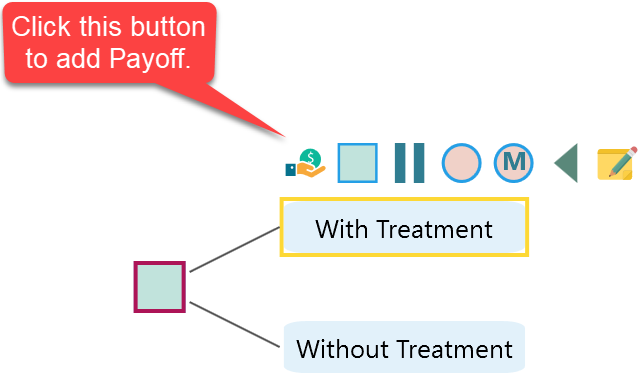
Then when this window shows up, choose the second button "Cost-Effectiveness Analysis".
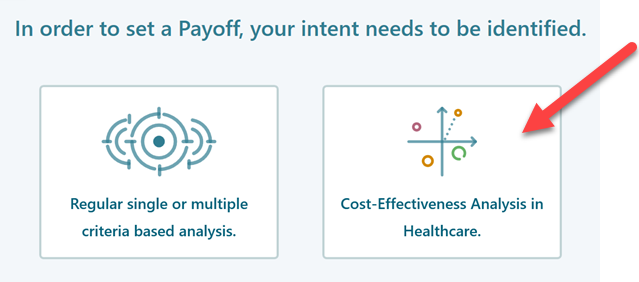
Then, choose the second radial box "Minimize AALY" and select the formula as shown here. Let's use a 3% discounting rate.

Then, click proceed, and you will be taken to the decision tree. Enter the values for the "Without Treatment" option as shown below.
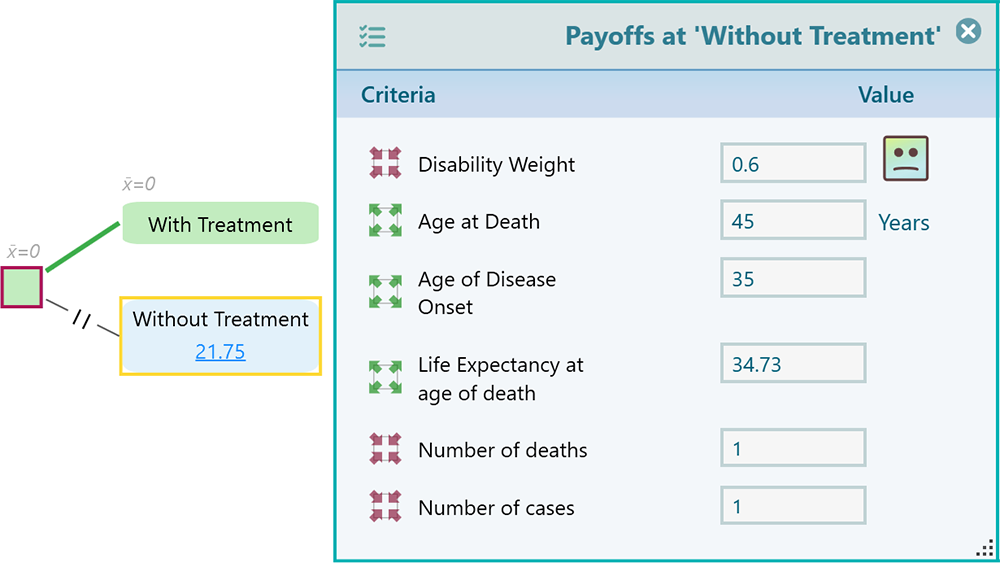
Notice that the DALY calculated for this option "Without Treatment" as 21.75.
Then, set the DALY payoff for the "With Treatment" option as shown below.
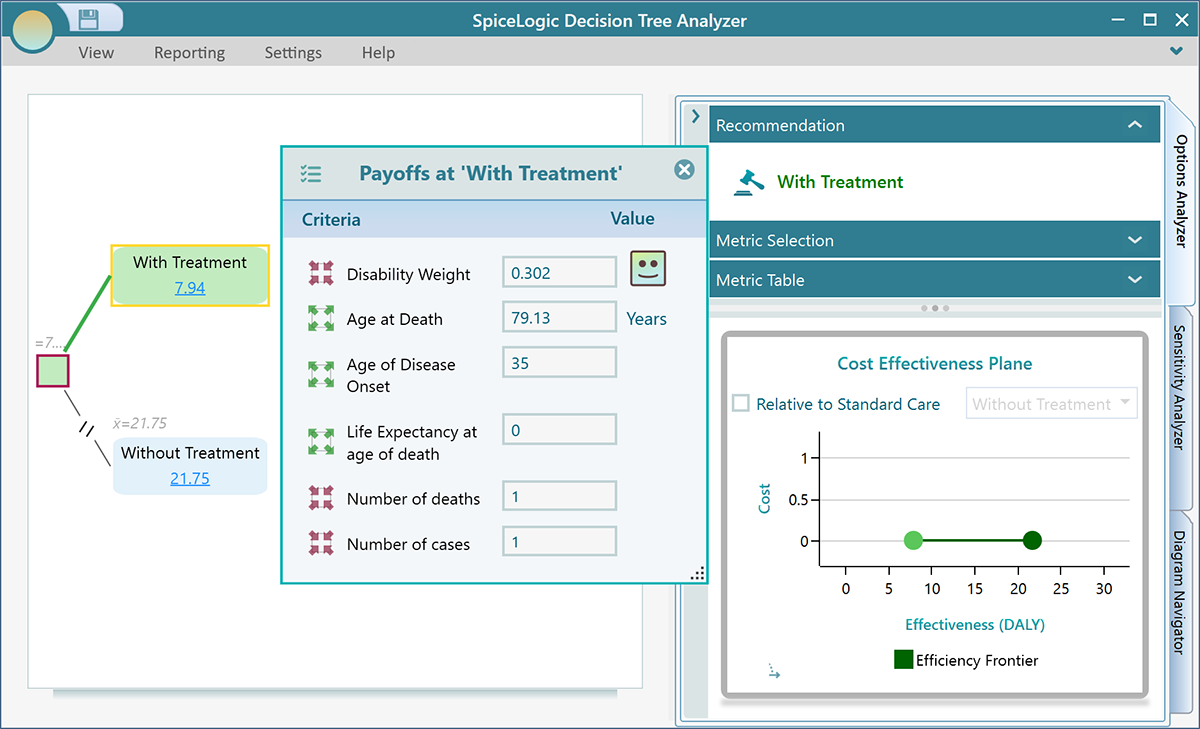
Notice that, the DALY for the option "With Treatment" is calculated as 7.94. As our objective is to Minimize DALY, the option with Treatment is shown as the recommended option, as its DALY is 7.94, which is lower than the option DALY of the option without treatment, (21.75).